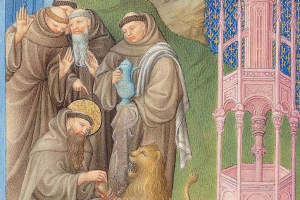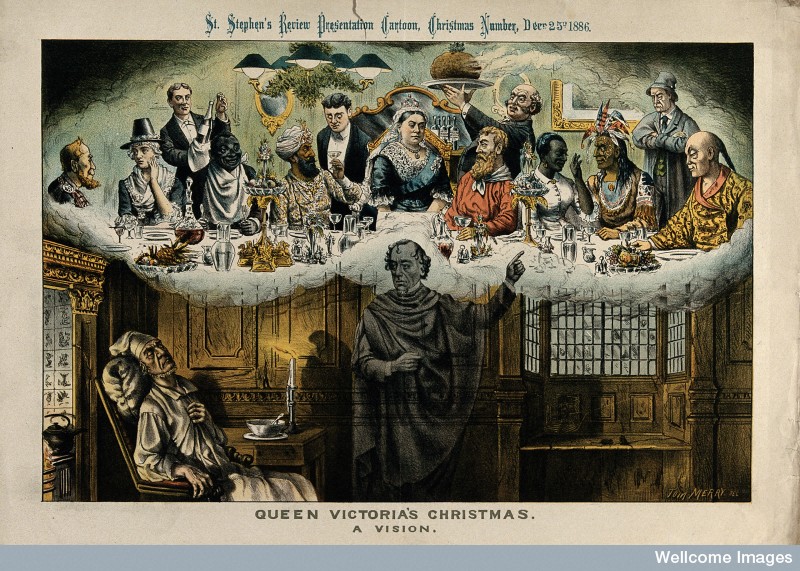CIDOC Conceptual Reference Model (pdf)
From the “Definition of the CIDOC Conceptual Reference Model:”
This document is the formal definition of the CIDOC Conceptual Reference Model (“CRM”), a formal ontology intended to facilitate the integration, mediation and interchange of heterogeneous cultural heritage information. The CRM is the culmination of more than a decade of standards development work by the International Committee for Documentation (CIDOC) of the International Council of Museums (ICOM). Work on the CRM itself began in 1996 under the auspices of the ICOM-CIDOC Documentation Standards Working Group. Since 2000, development of the CRM has been officially delegated by ICOM-CIDOC to the CIDOC CRM Special Interest Group, which collaborates with the ISO working group ISO/TC46/SC4/WG9 to bring the CRM to the form and status of an International Standard.
Objectives of the CIDOC CRM
The primary role of the CRM is to enable information exchange and integration between heterogeneous sources of cultural heritage information. It aims at providing the semantic definitions and clarifications needed to transform disparate, localised information sources into a coherent global resource, be it with in a larger institution, in intranets or on the Internet. Its perspective is supra-institutional and abstracted from any specific local context. This goal determines the constructs and level of detail of the CRM.
More specifically, it defines and is restricted to the underlying semantics of database schemata and document structures used in cultural heritage and museum documentation in terms of a formal ontology. It does not define any of the terminology appearing typically as data in the respective data structures; however it foresees the characteristic relationships for its use. It does not aim at proposing what cultural institutions should document. Rather it explains the logic of what they actually currently document, and thereby enables semantic interoperability.
It intends to provide a model of the intellectual structure of cultural documentation in logical terms. As such, it is not optimised for implementation-specific storage and processing aspects. Implementations may lead to solutions where elements and links between relevant elements of our conceptualizations are no longer explicit in a database or other structured storage system. For instance the birth event that connects elements such as father, mother, birth date, birth place may not appear in the database, in order to save storage space or response time of the system. The CRM allows us to explain how such apparently disparate entities are intellectually interconnected, and how the ability of the database to answer certain intellectual questions is affected by the omission of such elements and links.
The CRM aims to support the following specific functionalities:
- Inform developers of information systems as a guide to good practice in conceptual modelling, in order to effectively structure and relate information assets of cultural documentation.
- Serve as a common language for domain experts and IT developers to formulate requirements and to agree on system functionalities with respect to the correct handling of cultural contents.
- To serve as a formal language for the identification of common information contents in different data formats; in particular to support the implementation of automatic data transformation algorithms from local to global data structures without loss of meaning. The latter being useful for data exchange, data migration from legacy systems, data information integration and mediation of heterogeneous sources.
- To support associative queries against integrated resources by providing a global model of the basic classes and their associations to formulate such queries.
- It is further believed, that advanced natural language algorithms and case-specific heuristics can take significant advantage of the CRM to resolve free text information into a formal logical form, if that is regarded beneficial. The CRM is however not thought to be a means to replace scholarly text, rich in meaning, by logical forms, but only a means to identify related data.
(emphasis in original)
Apologies for the long quote but this covers a number of important topic map issues.
For example:
For instance the birth event that connects elements such as father, mother, birth date, birth place may not appear in the database, in order to save storage space or response time of the system. The CRM allows us to explain how such apparently disparate entities are intellectually interconnected, and how the ability of the database to answer certain intellectual questions is affected by the omission of such elements and links.
In topic map terms I would say that the database omits a topic to represent “birth event” and therefore there is no role player for an association with the various role players. What subjects will have representatives in a topic map is always a concern for topic map authors.
Helpfully, CIDOC explicitly separates the semantics it documents from data structures.
Less helpfully:
Because the CRM’s primary role is the meaningful integration of information in an Open World, it aims to be monotonic in the sense of Domain Theory. That is, the existing CRM constructs and the deductions made from them must always remain valid and well-formed, even as new constructs are added by extensions to the CRM.
Which restricts integration using CRM to systems where CRM is the primary basis for integration, as opposed to be one way to integrate several data sets.
That may not seem important in “web time,” where 3 months equals 1 Internet year. But when you think of integrating data and integration practices as they evolve over decades if not centuries, the limitations of monotonic choices come to the fore.
To take one practical discussion under way, how to handle warning about radioactive waste, which must endure anywhere from 10,000 to 1,000,000 years? A far simpler task than preserving semantics over centuries.
If you think that is easy, remember that lots of people saw the pyramids of Egypt being built. But it was such common knowledge, that no one thought to write it down.
Preservation of semantics is a daunting task.
CIDOC merits a slow read by anyone interested in modeling, semantics, vocabularies, and preservation.
PS: CIDOC: Conceptual Reference Model as a Word file.


